Beyond the sound barrier: Porsche 959 - the fastest super sports car in the world in 1985

Fastest high-tech transporter and dream sports car: The Porsche 959, presented in 1985 (here with Walter Röhrl on a test drive in Weissach), outclassed the competition.
(Photo: Porsche/sp-x)
The sound of its twin-turbo boxer engine was loved even by star conductors like Herbert von Karajan, and the all-wheel-drive car's performance was feared by Ferrari and Lamborghini drivers: The Porsche 959 is one of the most fascinating high-tech racing cars of the 1980s. It had its world premiere in September 1985. A chronicle.
It was a year of sporting sensations. In 1985, 16-year-old Steffi Graf was on the verge of topping the tennis world rankings, up-and-coming player Boris Becker won Wimbledon, and rally titan Walter Röhrl drove the Group B monster Audi Sport Quattro E2 to its only victory in a World Championship race – while the Porsche 959, also designed for the wild Group B, debuted at the 1985 Frankfurt Motor Show as the most powerful production sports car for the road.
When Walter Röhrl once said, "When accelerating, the tears of emotion must flow horizontally down to the ears," this quote from the later Porsche test driver seems to have been aimed at the exuberant temperament of the 959. Equipped with electronic all-wheel drive and plenty of racing technology, the 331 kW/450 hp twin-turbo boxer burned down the track in a best-of-breed time of 3.9 seconds. By comparison, the V12 top dogs of the day, the Lamborghini Countach S and Ferrari Testarossa, managed 5.8 seconds.
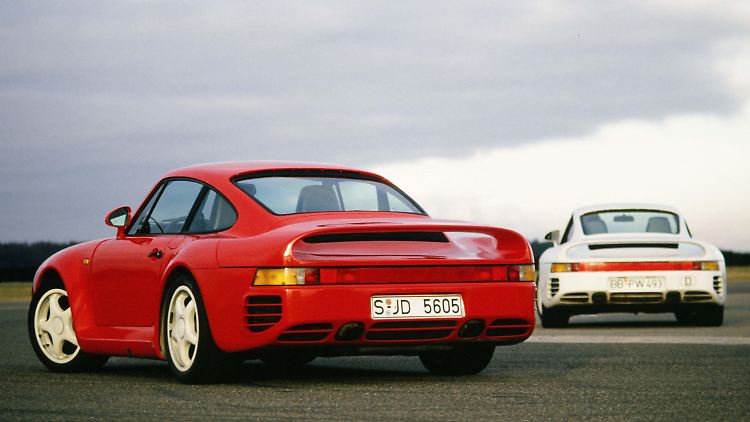
Boxer with thick cheeks: The Porsche 959 was based on the 911.
(Photo: Porsche/sp-x)
Although the Porsche 959 was based on the 911, it was a technological benchmark the likes of which the sports car world had never seen before. And all this at the astronomical price of 420,000 German marks – for that price, you could get four fully equipped Mercedes S-Classes. This apparently only made the Porsche 959, limited to 292 units, even more desirable, as the production run was sold out even before production began, and used cars commanded a premium.
Several sound barriers brokenThe Porsche 959 did indeed break several sound barriers, most notably the 300 km/h mark, which had long seemed insurmountable. Although the top-speed specialists from Maranello, Modena, and Sant'Agata Bolognese had promised their customers this speed since the early 1970s, it remained a pipe dream, one not even the legendary Lambo Countach could realize. As so often in automotive history, it was ultimately the transfer of technology from racing that accelerated production sports cars to new heights.

The futuristic technology carrier celebrated its premiere in 1985 as a cutaway model at the IAA in Frankfurt.
(Photo: Porsche/sp-x)
The infamous Group B World Rally Championship, with its four-valve technology, turbocharged engine, and all-wheel drive, pushed performance figures sky-high, requiring homologation series of at least 200 units. The first road-going sports car to nearly break the 300 km/h mark in 1984 was the Group B-inspired Ferrari 288 GTO with a 32-valve V8. But the Porsche 959 followed suit in 1985, and the "Sport" version even became the fastest production car in the world: 339 km/h. It was a good thing that a spectacular Kevlar tail unit, a large polyurethane front spoiler, electronic all-wheel drive, a speed-dependent shock absorber system, and self-leveling kept the Swabian high-flyer firmly grounded.
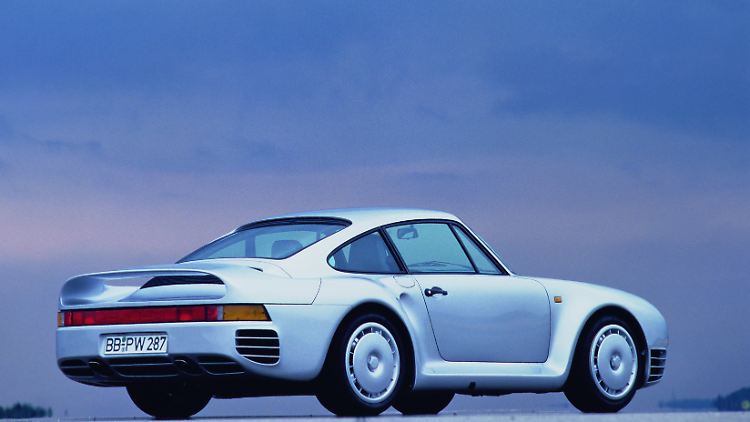
Initially designed for Group B rally racing, the Porsche 959 was built as a road sports car in a small series of 292 units.
(Photo: Porsche/sp-x)
For the first time, a new tire pressure monitoring system on the magnesium wheels warned of sudden pressure loss—a milestone in safety technology for a high-speed car like the 959 at the time. With so many groundbreaking features, most 959 drivers were happy to forgive their innovative car when the technology occasionally required an unscheduled visit to the workshop. The only thing that took some getting used to was the powerful double thump of the turbocharged engine with serial turbocharging, especially when the second turbocharger kicked in at around 5,000 rpm.
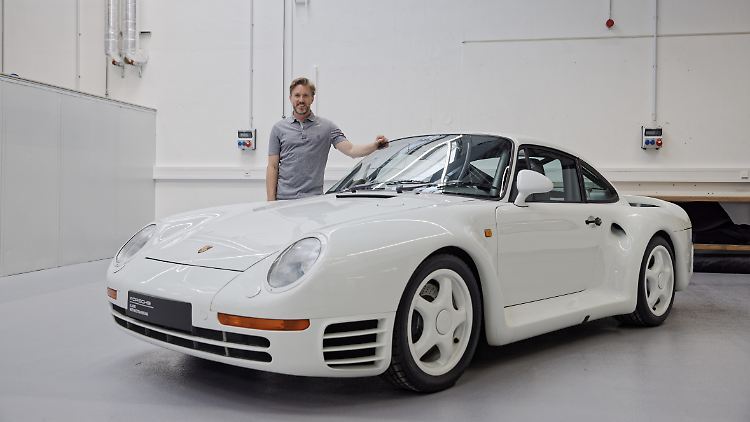
Former Formula 1 driver Nick Heidfeld bought one of only 29 Porsche 959 Sport cars built with a factory-installed power upgrade to 515 hp.
(Photo: Porsche/sp-x)
Perhaps it was due to this vehement forward momentum that some prominent 959 drivers weren't always able to tame their vehicles. Like the conductor of the century, Herbert von Karajan, who had two 959s allocated to him. Star conductor Justus Franz even picked up his Porsche 959 personally in Stuttgart, and pop star Falco was among his fans, as was King Juan Carlos of Spain. A sheikh from Qatar had seven 959s customized by Porsche. In contrast, former Formula 1 driver Nick Heidfeld placed the trump card of every car quartet of the 1980s in his garage: a rare 959 Sport.
Prospective buyers lined upThis Zuffenhausen-based car continued to push boundaries until the end of its career. When Porsche released a limited edition of eight units of the 959, which had actually been discontinued four years earlier, in 1992, asking for 747,500 marks—a record for a German sports car—buyers lined up once again, while other supercar specialists like Jaguar (XJ 220) and Bugatti (EB 110) couldn't even get their cars onto the market with discounts.
But Porsche was also used to difficult waters. In 1980, the company had recorded losses for the first time, the young transaxle models 924 and 928 were intended to replace the old star 911, and employee morale was at an all-time low. But then Peter W. Schutz unexpectedly took over as Chairman of the Executive Board of Porsche AG and, in just his third week, reversed the decision to discontinue the 911. Instead, he pushed ahead with the development of the iconic brand, first with a convertible, then with the Porsche 959, the "super-911," as the press dubbed it.
Schulz led Porsche back into the profit zone, and the 959 made an important contribution to this: The super sports car demonstrated the superior technical competence of the sports car specialist and established an exclusive line of road-going racers, which was later continued by the Porsche Carrera GT and the 918 Spyder.
The 959, developed from 1982 onward, was originally intended to focus on rally tracks, where it would outclass Group B models like the Audi Sport Quattro. The regulations stipulated a minimum production run of 200 vehicles, and so Porsche unveiled a prototype of its mega-911 at the 1983 IAA. Well-heeled Porsche collectors were thrilled, so the planned production numbers for the 959 were soon increased by almost 50 percent. Several 911s (953s) tested the 959's electronically controlled all-wheel drive at the 1984 Dakar Rally, achieving an immediate one-two finish.
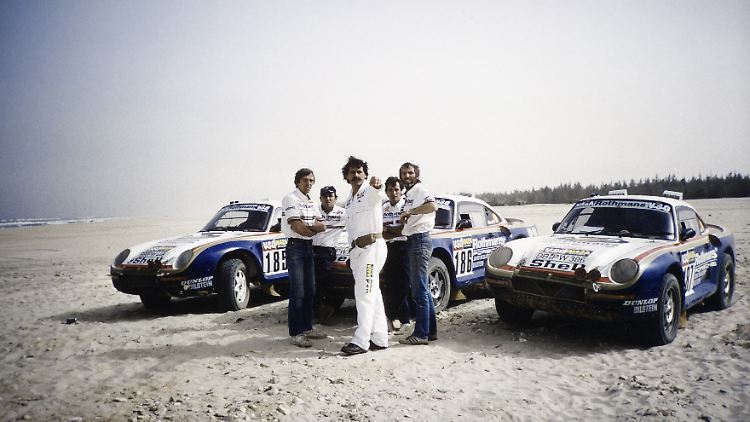
Off-road sensation: At the 1986 Dakar Rally, all three Porsche 959s that started crossed the finish line, finishing first, second, and sixth.
(Photo: Porsche/sp-x)
Although a test run of 959 prototypes at the 1985 Dakar ended prematurely, in 1986 the 959 finally proved its superiority in the world's toughest rally. The field for the desert tour was dominated by off-road vehicles and off-road trucks, with three 210 km/h Porsche 959s featuring dual shock absorbers on the front axle, off-road tires, and an electro-hydraulically controlled center differential for variable power distribution between the front and rear axles. The result: All three Porsches crossed the finish line, finishing first, second, and sixth, respectively.
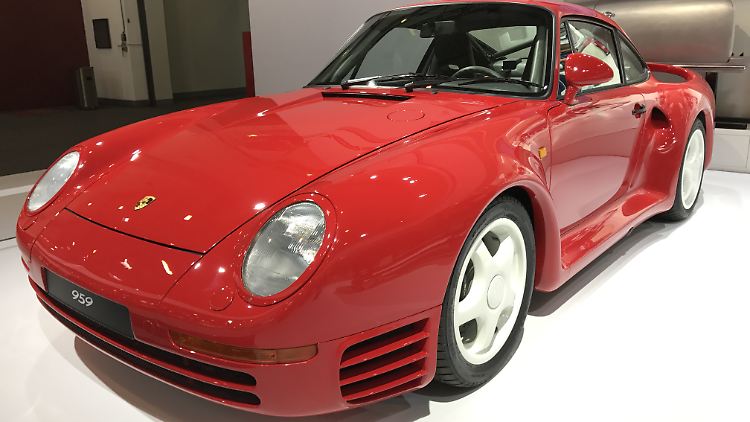
Fastest super sports car in the world: The performance-enhanced Porsche 959 Sport reached a top speed of 339 km/h in 1988.
(Photo: Porsche/sp-x)
But then the FIA declared the end of the high-horsepower Group B. Porsche now focused on Le Mans: In 1986, a 959 with the type code 961 took the class victory at Le Mans. In 1987, deliveries of the road-going version of the "development vehicle for the future," as Porsche called its prestige model, finally began. The patience of private customers who had waited for years was rewarded: the Porsche 959 set completely new standards in speed and performance and even served its lucky owners as an investment with guaranteed appreciation.
chronicle
1971 : Lamborghini becomes the first supercar manufacturer to target the 300 km/h mark. At the Geneva Motor Show, Bertone presents the prototype of the Lamborghini Countach, the LP 500, which, according to a press release, is capable of 300 km/h. Later production vehicles, however, are only measured at 280 to 290 km/h.
1982 : Porsche launches the development project 959 for the Rally Group B. The Lamborghini Countach LP 500 S goes into series production with a 4.8-liter engine and reaches 300 km/h according to the factory specifications.
1983 : In September, the Porsche 959 celebrates its world premiere as a "Group B" prototype at the Frankfurt Motor Show. The 200 customer orders for road versions of the 959 required for "Group B" homologation are no problem for Porsche. In fact, demand exceeds the planned production run.
1984 : Porsche enters the Paris-Dakar Rally with three 911 4x4 vehicles, already equipped with the all-wheel-drive system of the 959. The vehicles finish 1st, 2nd, and 26th, respectively. Development begins on the Lamborghini Project 112, a Countach successor. The 441 kW/600 hp test vehicle of Project 112, the Countach Evoluzione prototype, achieves an average lap speed of 314.1 km/h in Nardo. The Lamborghini Countach Turbo S, with 550 kW/748 hp, is built in a limited edition of two. Jaguar chief designer Jim Randle develops the idea of a new flagship for the British automobile industry, the Jaguar XJ 220. The Ferrari 288 GTO, the fastest road-going Ferrari to date, is unveiled at the Geneva Motor Show. By the end of 1985, 277 Ferrari GTOs including the Evoluzione series were built
1985 : Three 959 prototypes with engines from the 911 Carrera 3.2 competed in the Paris-Dakar. Collisions with rocks, etc., prevented any of the vehicles from reaching the finish line. However, the Porsche 959 won the Egyptian Pharaohs Rally. The production version of the Porsche 959 celebrated its world premiere at the IAA in Frankfurt in September , and a cutaway model of the car was also presented. The block of the six-cylinder biturbo boxer engine in the 959 was cast from an aluminum alloy; the cylinders were air-cooled, the cylinder heads water-cooled, and the two turbochargers were arranged in register. The chassis was electronically controlled, and the all-wheel drive was controlled by a sensor system. The top speed of the Porsche 959 was rated at "over 315 km/h"; even more impressive was the acceleration time of 3.9 seconds for the sprint to 100 km/h. Although the sports car manufacturer AC had previously reported values of under four seconds for the Roadster Cobra, these values are doubted by experts, while the press confirms the best acceleration value of the Porsche 959
1986 : Sensation at the Paris-Dakar Rally. First, second, and sixth place (the workshop car) went to the Porsche 959. Apart from the increased ground clearance, the cars were largely identical to the production version, now also featuring the engine from the 959. However, the power was throttled back to 249 kW/400 hp to accommodate African fuel quality. Victory at the 1,000-lane Rally in France. At the 24 Hours of Le Mans, the 959, designated 961, achieved a class victory. The car was specified for the FIA GTX class. It finished seventh overall. Aston Martin launched the high-performance V8 Vantage Zagato, bodied by Zagato, based on the V8 Vantage, and built in a limited edition of 50. Tests by the trade press show that Aston Martin narrowly missed its self-imposed target of a top speed of 300 km/h
1987 : The Porsche 961 participates again in Le Mans. However, the car burns out after an accident. 113 units of the road version of the 959 are produced this year. The Ferrari F40 debuts as the fastest road-going Ferrari to date.
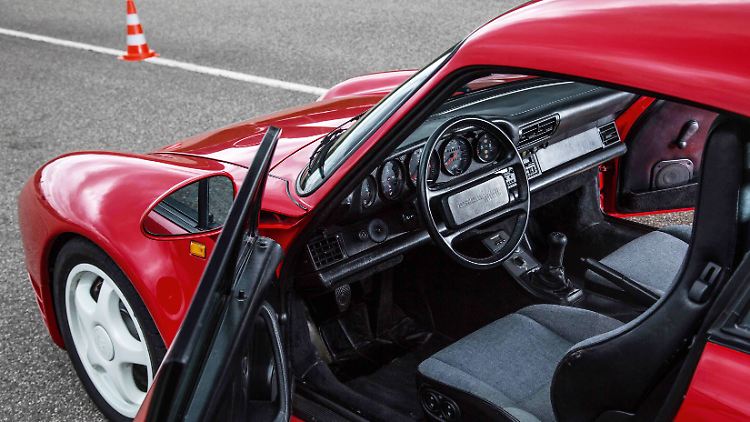
Sport and comfort: The Porsche 959 also proved to be fully suitable for everyday use.
(Photo: Porsche/sp-x)
1988 : Porsche launches a 29-unit series of Porsche 959 Sports, some of which receive a factory-fitted power upgrade to 379 kW/515 hp, enough for a top speed of 339 km/h (211 mph). Otherwise, the 959 Sport differs from the 959 "Komfort" (Comfort) with a sharpened sports suspension, sports seats, four-point seatbelts, a roll cage, and the removal of air conditioning and the right exterior mirror. After a total of 292 units, production of the Porsche 959 ends. To mark the company's 25th anniversary, Lamborghini introduces the "Countach 25," intended as a response to the Porsche 959 and Ferrari F40. The anniversary Lamborghini becomes the most-produced Countach model of all time, but at 295 km/h (183 mph), it remains below the 300 km/h (186 mph) mark. The near-production study of the Jaguar XJ 220 debuts at the Birmingham Motor Show, but still with all-wheel drive and a V12 engine
1989 : A Porsche 959 convertible is built from a damaged car and shown by the Düsseldorf company Auto Becker at the Frankfurt IAA
1991 : On September 15, Ettore Bugatti's 110th birthday, the 342 km/h (212 mph) Bugatti EB 110, featuring a 412 kW/560 hp 3.5-liter V12 engine, debuts in Paris. As the EB 110 S or SS, the Bugatti even reaches 351 km/h (218 mph), a speed later surpassed only by the McLaren F1. In Germany, the Bugatti EB 110 is marketed as a long-distance business car.
1992 : A small series of eight Porsche 959s is produced from spare parts, featuring optimized leveling and modified shock absorbers. The price is 747,500 marks. In June, the first Jaguar XJ 220 customer vehicle is delivered, albeit with a V6 instead of the originally planned V12 engine.
1998 : The "Show & Display" law is passed in the USA, allowing the import and limited use (up to 2,500 miles per year) of technically significant vehicles such as the Porsche 959. Previously, the Porsche 959 had not received homologation for North America.
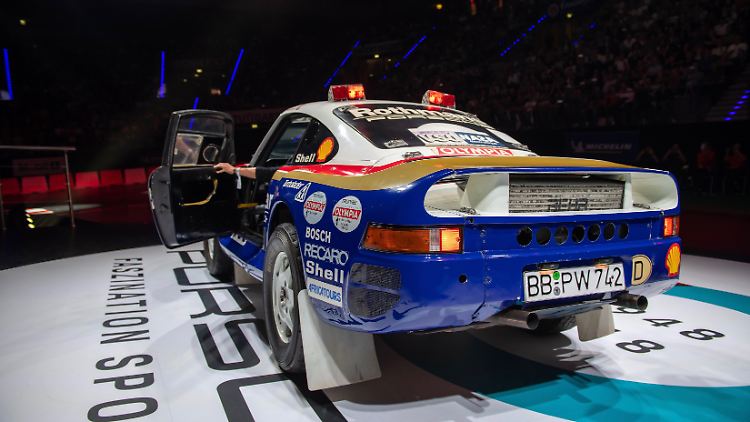
A symphony with six roaring twin-turbo wind instruments: The Porsche 959 Paris - Dakar dominated the Porsche Sound Night in Stuttgart in 2018.
(Photo: Porsche/sp-x)
2017 : The first Porsche 959 road cars achieve classic car status and are considered candidates for an H-license plate
2025 : Porsche and the community celebrate the anniversary "40 years of the Porsche 959" with various activities and events
Selected production figures
- 292 units, of which 113 units in 1987, 179 units in 1988 and eight vehicles in 1992
- 29 units of the Porsche 959 were delivered in a 100 kilogram lighter sports specification, without air conditioning, rear seats, power windows and right-hand exterior mirror, but with an optional factory-fitted performance upgrade.
Source: ntv.de, Wolfram Nickel, sp-x
n-tv.de





